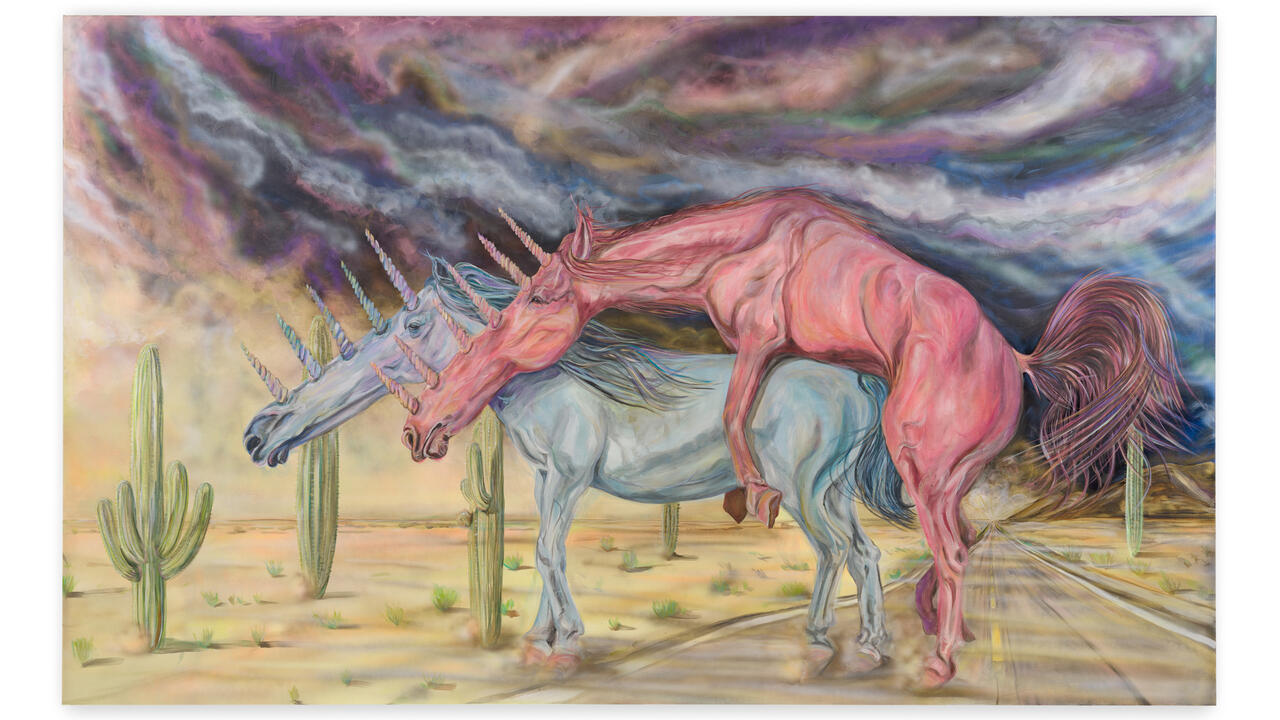Victoria Fu
Simon Preston Gallery, New York, USA
Simon Preston Gallery, New York, USA

Nowadays, our daily news feeds regularly feature stories of hacked networks, cyber warfare and political polarization in the echo chambers of social media – substantially challenging if not entirely discrediting the utopian rhetoric that has long attended all things digital. Yet if Silicon Valley’s simple-minded futurism and iPhone cosmopolitanism is just a dream, what can we expect from the ever-more complete saturation of daily life by digital media and technology?
This question comes to mind in ‘Televoix’, Victoria Fu’s thoughtful and carefully conceived second exhibition at Simon Preston Gallery. As they enter, visitors come upon Double Curtain 1 (all works 2017), which, as its name suggests, is a large curtain, both sides of which have been printed on. It hangs at an angle, blocking off most of the gallery from view. Large Circle 3, an inkjet-printed image on wood, hugs both sides of a corner of the gallery, tracing the distorted outline of a spotlight that hits the wall at an angle. Together, these works clearly evoke a stage and prompt visitors to consider their environment more carefully.

On the front of the curtain, a grainy 16mm film still of a screen saver further enhances its reference to theatre and theatricality. A digitally rendered 3D environment and CGI models appear on its back. Both the curtain and the corner piece thus straddle the actual and the virtual, real and digital space. The curtain is both a screen that can be seen from a distance and an object that must be walked around. Similarly, the cast-spotlight wall piece is both three-dimensional relief and two-dimensional image. This is a gallery space cut through and haunted by the ether of digital media, just as our daily lives are increasingly enmeshed in cyberspace.
Fu also highlights the dichotomy between the real and the virtual in the two works on view behind the curtain, Shadow and Télévoix 1. In some ways, the latter, a seven-minute colour video, is the heart of the show, its light and sound drawing the visitor across the gallery. As in earlier works such as Velvet Peel 1 (2015) and Bubble Over Green (2015), here Fu weaves analogue and digital visual effects together with live-action film. At times, the screen’s surface is brought to life by a spill of paint, spreading across the surface of the camera lens, or a drizzle of shampoo, sliding down a glass pane. Occasionally Fu uses a digital paint tool to partially erase one layer of her moving image, revealing the virtual emptiness of its support. The results alternately push us into the constructed ‘deep space’ of the video or pull us back to the screen’s surface, playfully animating the analogue-digital divide.

On the wall to its left, the appropriately titled Shadow is something of a negative to Télévoix 1: a beautiful and elusive five-and-a-half minute projection of shapes, including the artist’s body, onto the wall. These appear and vanish in milliseconds, as if the images from Télévoix 1 have escaped from the video screen, diverting our attention from the video monitor.
Much critical reception of film and video art has focused on the phenomenological vocabulary of medium and apparatus. Fu certainly deploys this vocabulary here, but she does so in a playful manner that is neither reductive nor programmatic. There’s a seductive element at work here that can catch the unwary viewer off guard: in Fu’s work, real space is not any more ‘real’ than the space of her constructed images. The light-hearted, geometric puppet play of all four works on view is just as phantasmatic. Rather than force us to choose sides, Fu suggests that the inescapable movement between the two – the analogue and digital, the fictive and the real – is essential to our experience of art.
Main image: Victoria Fu, Télévoix 1 (detail), 2017, video still. Courtesy: the artist and Simon Preston Gallery, New York






















